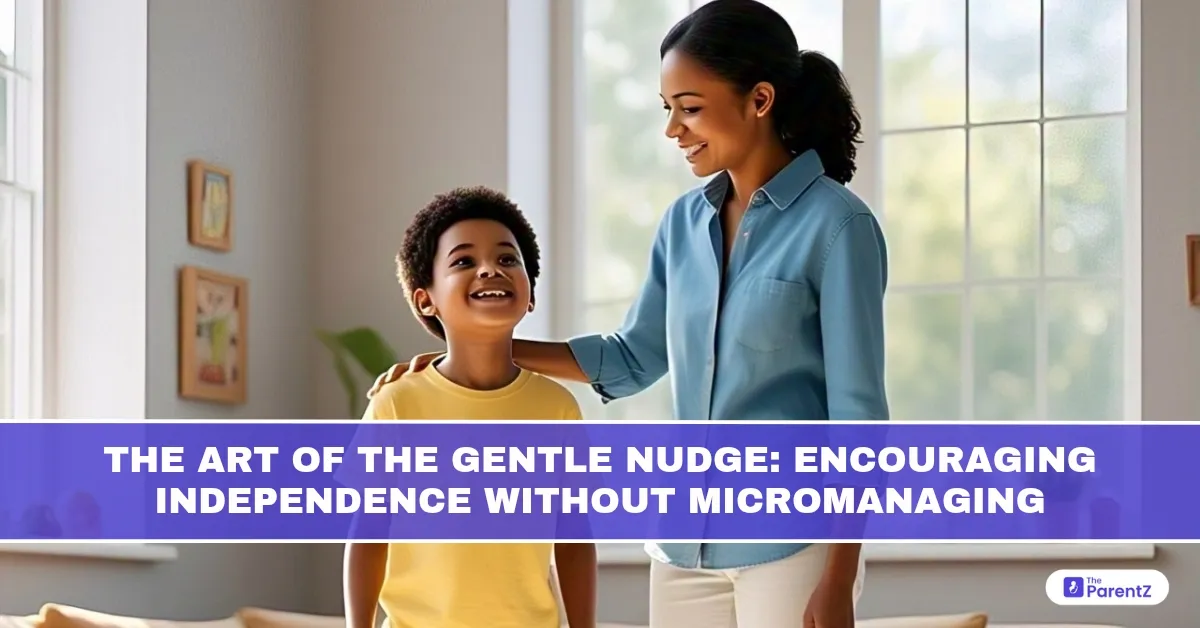Every parent knows that moment: watching a child struggle with a task, fingers itching to step in and help. Maybe it's a toddler wrestling with their jacket zipper or a teenager stumbling through a college application. The instinct to rescue is powerful. Yet deep down, parents understand that these struggles are the very building blocks of confidence and capability. This delicate balance—knowing when to help and when to step back—is what parenting experts call "the gentle nudge approach." It's not about abandoning children to figure everything out alone, nor is it about controlling their every move. Instead, it's about creating that sweet spot where growth happens: just enough support, just enough space.
What Is a "Gentle Nudge" Anyway?
A gentle nudge is exactly what it sounds like – a subtle push toward independence without taking over. It's the difference between saying "Let me do that for you" and "You can figure this out, and help is here if needed." It's encouraging growth without forcing it.
Think of it like teaching a child to ride a bike. You hold on at first, running alongside them. Then, without telling them, you let go for just a moment. They're riding on their own, even if just for a few seconds, before they realize it. That's a gentle nudge – giving them space to succeed while staying close enough to catch them if needed.
Why Gentle Nudges Matter
When we micromanage our kids, we accidentally teach them two harmful lessons:
- "You can't do this without me."
- "You aren't trusted to handle this."
Neither message helps them grow into confident adults. But with gentle nudges, we communicate something entirely different:
- "Your abilities are worthy of belief"
- "It's okay to struggle sometimes."
- "Support is available, but this is your journey."
Practical Ways to Nudge Without Taking Over
1. Ask questions instead of giving answers
When your child says, "I can't figure out this math problem," try responding with "Which part is confusing you?" instead of showing them the solution. Questions make them think through the process.
2. Create stepping stones
Break big challenges into smaller pieces. Many children feel overwhelmed about learning to do laundry, so starting with just sorting clothes, then adding detergent, and so on, works wonders. Each small success builds confidence.
3. Use the "take a step back" approach
Start by doing things together, then gradually do less. To make lunch, first make it together, then watch them make it, then just be in the kitchen while they work, then let them handle it completely.
4. Normalize mistakes
Say things like "Everyone messes up sometimes" or share your own learning experiences. When eight-year-old Marcus spilled milk everywhere trying to pour it himself, his dad shared a story about dropping an entire casserole he'd spent hours making.
5. Give advance notice
"Next week, you'll be responsible for feeding the dog every morning." This preparation time lets them mentally adjust to new responsibilities.
Safety First: Nudging Without Endangering
Obviously, independence has its limits. Here's how to balance safety with growth:
- Assess genuine readiness: There's a difference between a child who's nervous about something new and one who truly lacks the physical or emotional skills for a task.
- Practice in low-risk settings: Let them practice cutting with a butter knife before moving to a sharper one. Have them cross pretend streets before real ones.
- Create safety nets: For a child learning to ride their bike alone around the block, maybe you establish check-in points or give them a watch that can call you.
- Talk through "what ifs": "What would you do if a stranger approached you?" These conversations prepare them without scaring them.
When Nudging Feels Like Pressure
Sometimes our "gentle" nudges don't feel gentle to our kids. Signs your nudging might be creating pressure:
- They seem more anxious, not less
- They avoid activities they used to enjoy
- They shut down when you offer help
If you see these signs, back up. Maybe they need more support right now, and that's okay. Independence isn't a straight line.
Conclusion
Some days, you'll nail this gentle nudging thing. Other days, you'll either do too much or expect too much. That's normal. The fact that you're thinking about this balance means you're already on the right track.
The goal isn't perfect independence by a certain age – it's raising kids who know they can tackle challenges AND ask for help when they need it. That's the real win.
So the next time your child struggles with something, take a breath before jumping in. Ask yourself: "Is this a moment for me to step in, or a moment for me to step back?" Your child's growing confidence will thank you.








Be the first one to comment on this story.